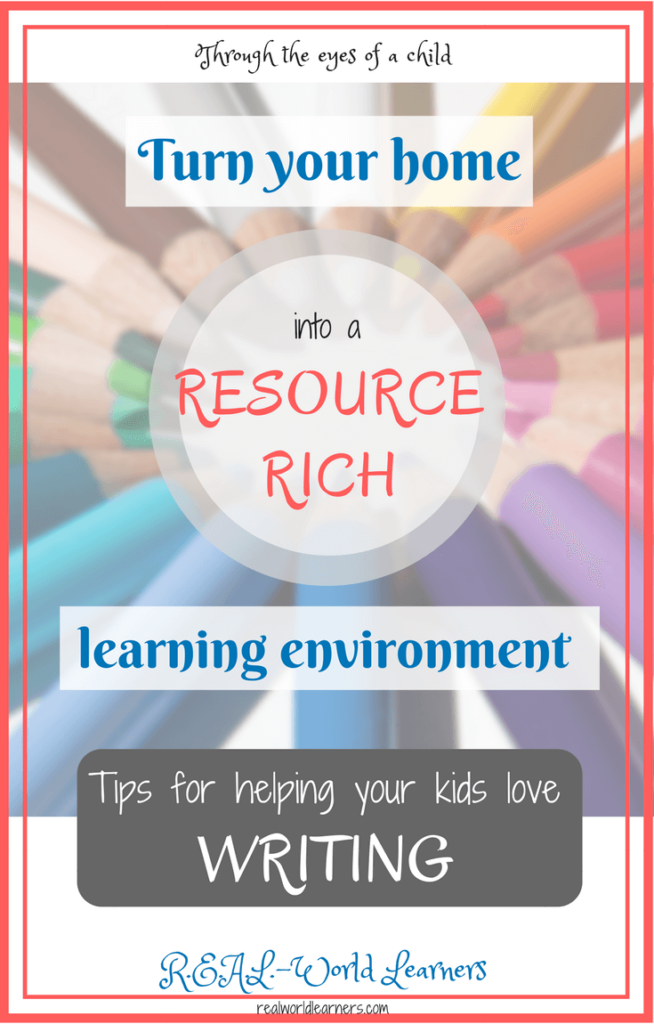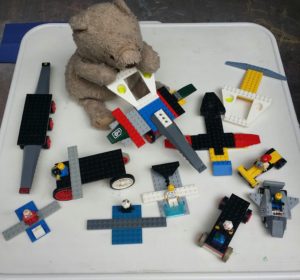Curating a Literacy-Rich Home Environment

Kids can learn so much when they are surrounded by interesting, creative, and informative things. These “things” can be books, toys, digital resources — or friends, grandparents, outdoor adventures … etc. When we curate* a resource-rich home environment for our kids, creating a space where they can comfortably live, play, and explore with full support and involvement from their family and friends, they will spontaneously learn much more than they ever could from a textbook. (*To curate is to seek out and display the best content in a given category.)
This post contains affiliate links. You can read my full privacy policy here.
A love for learning
Exploring ideas, asking questions, and trying new skills all come naturally to children. We can foster their innate love for learning by providing resources that encourage them to think and discover more about their world. Our communication with them also opens the world for them — when we listen to their questions, stories, or even complaints, we validate their ability to make sense of things and we find in-roads to their framework of understanding. When we take the time to answer their questions or teach them new skills when they ask for help (such as riding a bike, drawing a picture, writing letters, etc.), the knowledge will be valuable and meaningful to them, and it will stick!
Helping kids write — authentically
I believe skills are best learned in authentic situations, not through worksheets or practiced in isolation and out of context. When kids (and adults!) are intrinsically motivated, they’ll put in All The Effort to see something through. This pretty much describes our homeschooling philosophy, at least for the preschool stage; I try to stay aware of real-life situations and questions that might spark conversations that can provide context for learning new concepts and skills.
We do a lot of spontaneous, simple things that help to develop reading and writing skills. I wanted to take some time here to pass along a few tips that we’ve found easy to implement and helpful for our own kids. This will be the first post in a series and I will continue to share ideas for helping kids learn to love reading and writing from a young age.
Creative Writing
I’ll start with some of our writing projects, then go back to flesh out the details of how our kids learned/are learning to read and write (with no curriculum and minimal direct instruction — it hasn’t been too painful for any of us yet ;).)
I love writing and I want to encourage my kids to enjoy the creative process of putting thoughts on paper/screens as well. Ever since N could talk, he’s been telling stories. Most of his stories fall in the category of “fan fiction” — as in, any story we read becomes the source of his play-acting and conversations. I encourage him to tell me stories and have often written them down, in all their stream-of-consciousness rambling-preschooler glory ;).
This is one that he dictated to me when he was three.
It was a beautiful day on the island of Sodor. Thomas got in trouble because he knocked the bridge over. And he had an idea. He could have tape for the bridge. And he tape it for the bridge to not knock over. So he tried and tried and it didn’t fall over. Then Percy came by and said do you want to have a snack with us? Sure. We can eat all the fruit snacks in the whole world. He had a beautiful day and they turned into beautiful butterflies. And they wasn’t hungry anymore. They was a big fat caterpillar train. He actually boomed and that’s okay. Boom is quite a magical space. He tried to not boom his friends. And he actually find an alligator. They go’d to a snail hunt. They be’d very, very, very quiet. They are going to play at the snail’s home with the snails.
You can tell what stories and shows he’d been into at that time. 🙂
Making up stories is a very important way for kids to process their ideas and make sense of how characters interact. Through this kind of role-play, they learn how characters (and real live people) communicate and interact, and when we take time to write down their stories, it encourages and validates their learning experiences. It’s also a great way to preserve memories and gain insights into life through their eyes.
Non-fiction Writing
Besides just providing story-telling opportunities, I like to also stretch them a bit and give them opportunities to write “non-fiction.” N has come up with a few ideas on his own about writing things that were more along the lines of informational reports. Here’s one story about this — and it’s definitely something you could try with your own kids!
I sometimes play youtube tutorials or webinars on the computer as the boys play legos in the living room. One day we were listening to one about writing “How to” and “List” posts on blogs. N was fascinated by it. I asked him if he wanted to write a “how to” article for my blog. He loved the idea so we brainstormed a bit and decided he could probably write a pretty good article about making lego cars, since that’s what he’s been doing almost all day for the past several days.
He sat on my lap while and dictated the following (with a tiny bit of direction from me):
How to Make Flying Cars Out of Legos
By N. (4 years old)
If you have a big box of legos, this is how you make a flying car:
- Get a flat piece.
- Get a long piece to put on there so it looks like wings.
- Get a steering wheel (if you can find one).
- If you can find wheels, put them on.
- Get a lego man if you can find one.
If you want to make it fancy:
- Get a lego helmet.
- Look for a windshield.
- Find lego lights and put them on the front.
Congratulations! You are finished. Now this is how you play with it: Pick it up. Zoom it through the air. And then when it lands, move it a little and then stop.
Ways to Solve Some Common Problems:
- If the car breaks, fix it.
- If you pretend there’s a storm, it crashes. And then fix it.
- If you have a little brother, he might destroy it. Fix it.
- If you throw legos, they will break. Do not throw legos.
- If you go to bed with your legos, the lego pieces might get lost. Build another one.
- If you get a lego box from the store, you might lose pieces. So buy another one. <edited by Mommy: Actually, we can’t always buy more. New solution: Get lego pieces from your lego box and fix it.>
In conclusion, do not bring your legos to bed or on an adventure. Only play with them in the living room. Have fun using your imagination building legos!
You could try this at home as well :). Find something your child is interested in and ask them to “write a tutorial” explaining how they make it or play with it. You’ll learn some fun facts about your own kids along the way!
More Ideas Coming!
In future posts, I’ll share the toys, books, and digital resources that have helped my boys learn to read and write. I’ll also include more “guest posts” from my four-year old along with ideas for how you can inspire your children to write both creative and expository stories. I have a few free printables in the works as well. 🙂
Stay tuned for the rest of this series on creating a resource-rich learning environment that will help your children love literacy!
Updated to add: This turned into a 5 post series that includes:
- this initial post, as well as
- an article about helping your kids (of all ages!) write creatively – for fun!,
- more ideas for easily working in some creative writing exercises throughout your day,
- more storytelling activities that are fun for all ages, and
- five reasons to encourage your kids to tell stories.
See any of these articles for a free set of story prompts!
A Writing Curriculum for grades K – 12
If you’re looking for a high-quality writing program for your kids, I highly recommend checking out the award-winning WriteShop curriculum (for grades K – 12)! This is the most creative and inspiring writing curriculum I have seen and it lays a solid foundation for successful and enjoyable writing experiences through its detailed lesson guides, engaging and creative activities, and beautifully designed student workbooks.
Learning Resources for Teachers, Tutors, and Parents
If you’d like to visit my store to see my library of learning resources (focused on Pre-K – 3rd grade Math, Reading, and Writing, and High School Algebra and Geometry), you can check it out here:
https://www.teacherspayteachers.com/Store/Sandra-Balisky



9 comments on “Cultivating a love for reading and writing, part 1”